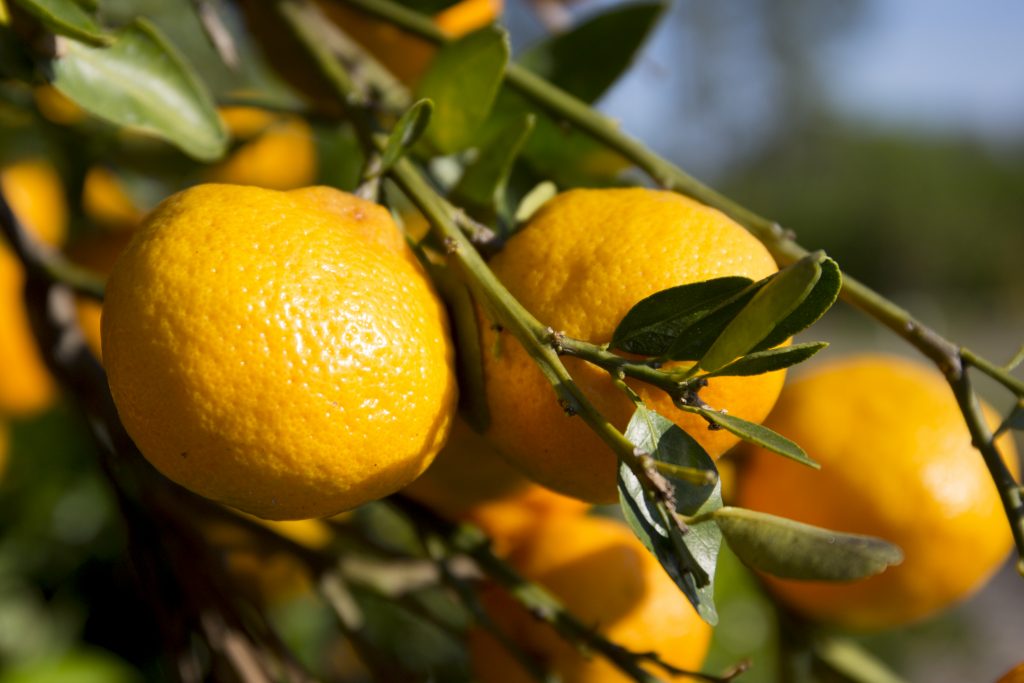
By: Ruth Borger, 517-803-7631, rborger@ufl.edu
LAKE ALFRED, Fla. — University of Florida (UF) researchers hope to discover new methods to help citrus growers fight the deadly citrus greening (or Huanglongbing) disease with cost effective, long-term sustainable treatments with the support of recently awarded federal grants.
Three teams of scientists from UF’s Institute of Food and Agricultural Sciences received nearly $4.5 million in U.S. Department of Agriculture funds to study new ways to manage the invasive insect causing millions of damage to Florida’s citrus crops.
“These grants build on an existing portfolio of success in finding solutions to combat citrus greening throughout Florida’s citrus groves,” said Michael Rogers, director of UF/IFAS Citrus Research and Education Center and coordinator of the UF/IFAS statewide citrus program. “They will contribute to the solutions we are providing that support citrus growers in sustainably and profitably growing citrus throughout the state.”
Managing the Asian Citrus Psyllid With Environment in Mind
Bryony Bonning, eminent scholar and professor in entomology and nematology, leads a team from Gainesville and the UF/IFAS Citrus Research and Education Center in Lake Alfred, Florida in a project that uses a bacteria-derived pesticidal protein combined with gene silencing to manage the invasive Asian citrus psyllid (ACP) population. The long-term goal of the proposed work is to create an environmentally benign approach for citrus growers to control ACP that works within an integrated pest management (IPM) strategy. The project intends to identify the optimal components for an ACP control product for grower use.
The grant project aims to: 1) optimize ACP-active proteins derived from the bacterium Bacillus thuringiensis (Bt) that suppress psyllid populations; 2) further develop genetic solutions that would disrupt ACP; and 3) screen for the best combination of these methods for use against ACP. On completion of this project, researchers will be well positioned to produce transgenic citrus and/or trap plants that will suppress ACP populations for use by citrus growers.
This method of effective vector control, combined with other measures, will help the citrus industry in Florida rebound, and protect the industries in California and Texas. The results of this research are anticipated to reduce the need for tree removal and replanting as well as reduce insecticide applications and increase yields and fruit quality, contributing to the long-term profitability and sustainability of U.S. citrus production.
Attacking Citrus Greening From Inside Out
Amit Levy, assistant professor of plant pathology, received a NIFA grant to examine how the Candidatus Liberibacter asiaticus (CLas) bacteria interacts with a narrow tissue – known as the phloem – which is buried inside the stem of the citrus tree. CLas resides in and plugs the phloem in the stem of the citrus tree, leading to inhibition of sugar and nutrient transport into the tree’s sink tissues, including the fruit.
Eliminating these plugs can presumably result in renewed sugar transport and increased fruit yields.
However, there is a significant gap in understanding CLas-phloem interactions in citrus, which has been a major limiting factor for controlling the disease. Levy and a team of UF/IFAS researchers and Sainsbury lab and Cornell University scientists plan to address these challenges with a novel seed coat-based system that supports in-depth analyses of phloem dynamics and CLas-phloem interactions in HLB-affected citrus. The project will identify key players required for phloem plugging, host immune response and CLas colonization inside the phloem. These key players can later become novel targets for manipulation with gene editing techniques that can be translated into usable products, such as transgene-free CRISPR/Cas9 edited plants to block the disease propagation and movement, and increase sugar and nutrient translocation into fruit thus increasing tolerance or resistance to HLB.
A Novel Therapeutic Strategy for HLB-Infected Trees
Huanglongbing (HLB)-resistant or tolerant citrus trees are the long-term solution for citrus greening disease. Existing research has generated transgenic citrus lines that provide robust tolerance to HLB. These transgenic lines are already in field tests as a potential management possibility for HLB. However, these trees will have to go through an extensive approval process before being made available to growers.
A research team led by UF/IFAS microbiology and cell science professor Zhonglin Mou and faculty from the UF/IFAS Citrus Research and Education Center and UF/IFAS Southwest Research and Education Center are working to speed up this process by reproducing the greening resistant or tolerant genetic makeup in non-transgenetically modified plants by gene editing using CRISPR/Cas9. This is a better long-term approach but will take time.
The primary goal of this project is to develop an interim treatment for HLB. The project hopes to turn off the genes that negatively control the citrus immune system and result in disease symptoms in citrus when exposed to disease-causing pathogens. Coupled with other work to target the HLB-causing bacterium itself, the overall goal is to develop new management strategies making citrus varieties highly tolerant to this disease. The project will use a vector derived from citrus tristeza virus (CTV) to remove negative regulation of the citrus immune system, leading to improved immune response and HLB tolerance. The same CTV vector will also deliver antimicrobial peptides to reduce HLB pathogens.
The synergism between the immune system-provided tolerance and the antimicrobial peptide-mediated pathogen reduction is expected to provide effective control of the HLB disease. Importantly, CTV naturally occurs in the field and does not make genetic changes to the citrus genome, and thus the employed strategy is a non-transgenic approach.









